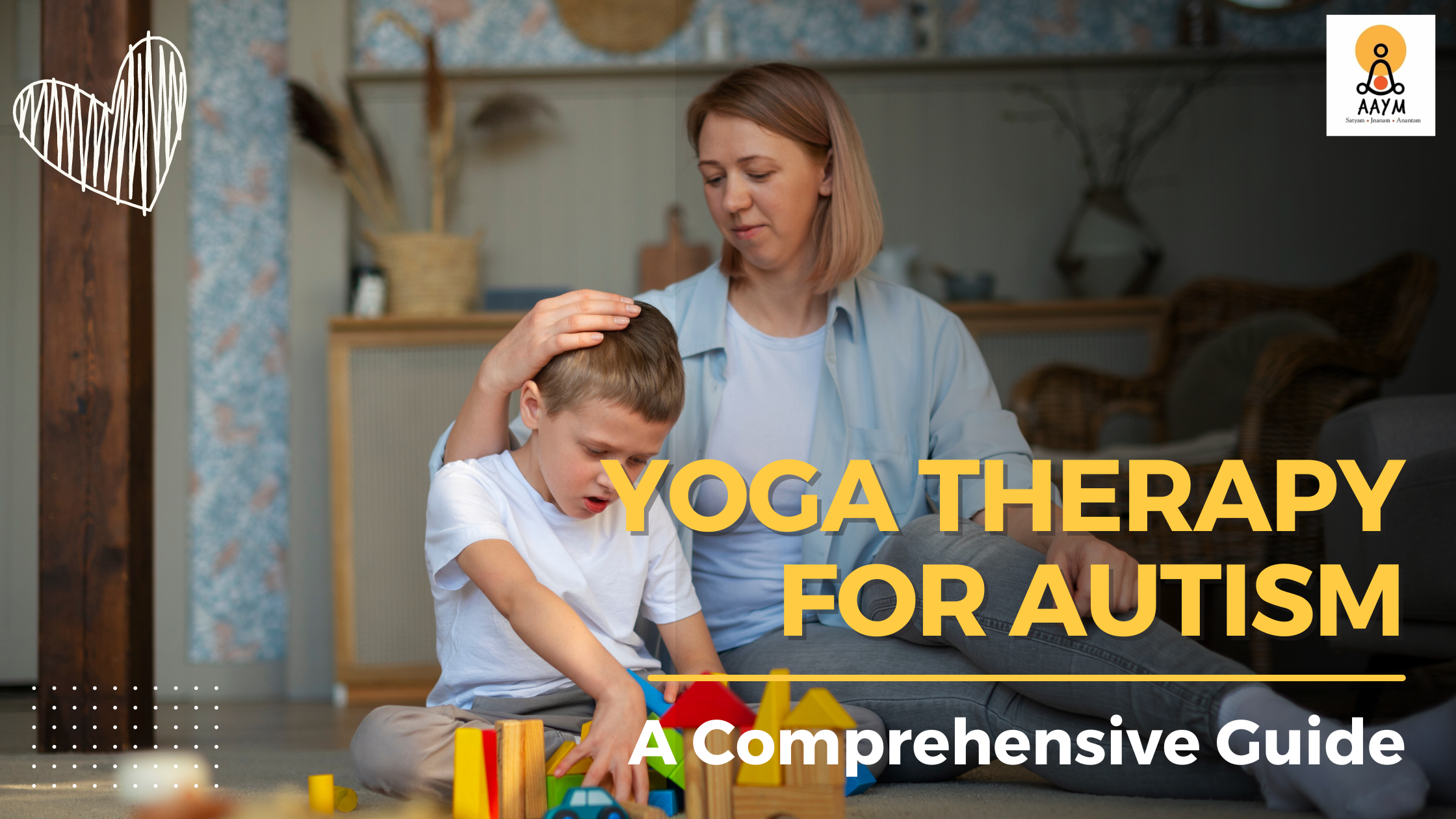Autism Spectrum Disorder (ASD) is a complex neurodevelopmental condition characterized by challenges in social interaction, communication, and repetitive behaviors. While there is no cure for autism, various therapies and interventions can significantly improve the quality of life for individuals with ASD. One such therapy gaining recognition for its holistic approach is yoga therapy.
Understanding Autism and Its Challenges
Autism manifests differently in each individual, but familiar challenges include sensory sensitivities, difficulties with communication and social interaction, and repetitive behaviors. These challenges can significantly impact daily functioning and overall well-being. Yoga therapy offers a multifaceted approach to addressing the needs of individuals with autism. By integrating physical postures (asanas), breathing techniques (pranayama), and mindfulness practices, yoga promotes holistic well-being and addresses core areas affected by autism.
Yoga Poses for Autism
Inverted Poses:
Poses such as Downward-Facing Dog and Legs-Up-the-Wall allow the body to rest and rejuvenate. These poses can help reduce stress, anxiety, and hyperactivity while promoting relaxation and grounding.
Forward Bends: Forward bending poses like the Child’s Pose and Forward Fold soothe the nervous system and quiet the mind. They promote relaxation, release tension, and encourage introspection.
Twists: Twisting poses like Seated Twists and Revolved Triangles improve spinal mobility and stimulate the digestive system. Twists can help regulate sensory input, increase body awareness, and promote relaxation.
Backbends: Back bending poses such as Cobra Pose and Bridge Pose improve posture, open the chest, and energize the body. These poses can enhance mood, boost confidence, and promote emotional resilience.
Pranayama: Breathing exercises like Deep Belly Breathing and Alternate Nostril Breathing regulate the breath, calm the nervous system, and reduce anxiety. Pranayama techniques promote emotional regulation, enhance focus, and improve self-regulation skills.
Conclusion
Yoga therapy offers a holistic approach to supporting individuals with autism, addressing physical, emotional, and behavioral challenges. By incorporating yoga into daily routines, individuals with autism can experience improved physical health, enhanced emotional well-being, and greater self-awareness. It is essential to consult with a qualified yoga therapist or healthcare professional to tailor yoga practices to individual needs and abilities. With consistent practice and patience, yoga can be a valuable tool in empowering autistic individuals to thrive and reach their full potential.
Understanding Autism and Its Challenges
Autism manifests differently in each individual, but familiar challenges include sensory sensitivities, difficulties with communication and social interaction, and repetitive behaviors. These challenges can significantly impact daily functioning and overall well-being. Yoga therapy offers a multifaceted approach to addressing the needs of individuals with autism. By integrating physical postures (asanas), breathing techniques (pranayama), and mindfulness practices, yoga promotes holistic well-being and addresses core areas affected by autism.
Yoga Poses for Autism
- Surya Namaskar (Sun Salutation): This dynamic sequence of poses increases circulation, improves flexibility, and enhances body awareness. Its rhythmic movements can help regulate sensory processing and promote a sense of calm.

